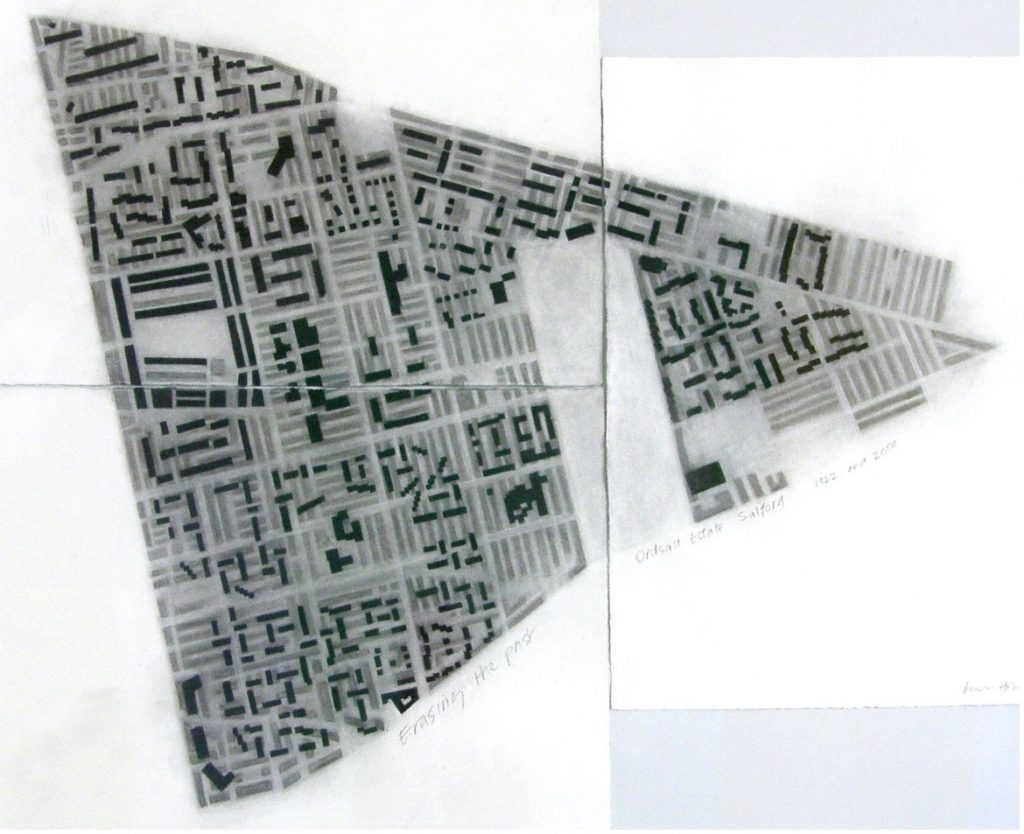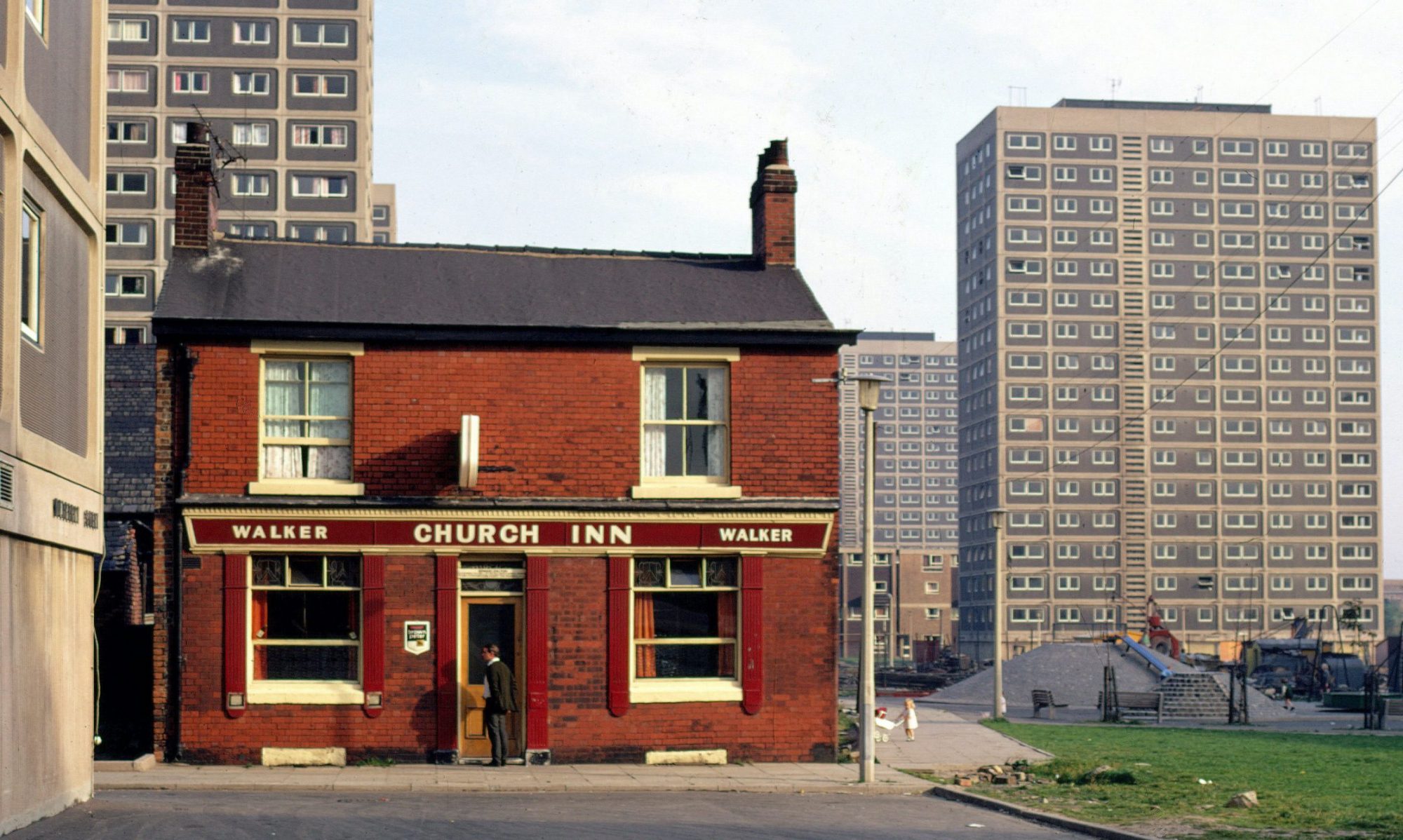Artist Leslie Holmes has lived in Ordsall for over 30 years recording the changing inner city landscape of Salford and Manchester. He is the project manager at Salford Lads Club and has created projects, with schools and community groups, looking at the past and present. He was lead artist at Ordsall Community Arts from 1996 until 2016. Leslie created projects about the Ordsall Estate for the Arts Council Architecture Week from 2002 to 2007 and developed projects for architecture students from Manchester University. Leslie was also commissioned by the Chapman Gallery in 2010 to work on “Salford In Motion” about the changing views of Salford. He has a studio at Regents Industrial Estate, Islington Mill.
I was one of the invited panel group for the 50th anniversary showing of the films made by Michael Goodyear for Salford University which were shown at the University in 2018 and I vividly remember the feeling in the hall when former residents heard the posh-voiced commentary from 1968 describing their community as slums. All my projects in Salford since 1992 are linked to the continued fallout from the destruction of these communities during the 1960s and 70s.
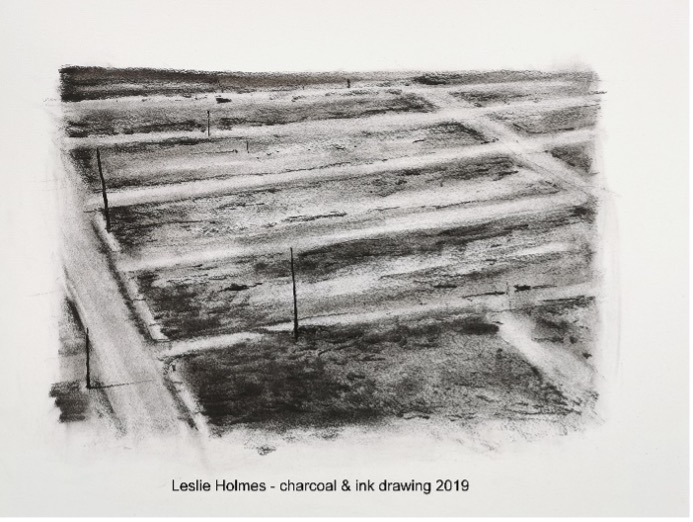
I made this drawing in 2020. It’s a detail from a photograph published in the Manchester Evening News (see below) in looking down from the top floor of the newly completed Sunnyside Court tower block in Ordsall. When I first saw the photograph, the news cutting was in a little frame on a bookcase in the vicarage of Rev. Robert Bracegirdle, then the vicar at St Clements C of E Church in Ordsall. On first sight, I thought it was a photograph of a bombed out city; it was a shocking image. My drawing shows an area of the estate with Robert Hall Street on the left; and the blackened traces of demolished streets. Over 7000 homes were demolished in Ordsall.
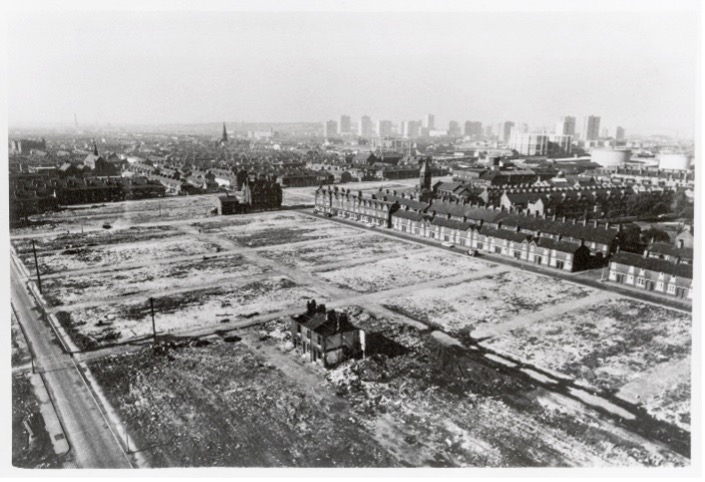
I remembered this image again when Sunnyside Court, known locally as “Crack Court,” was demolished in 2000. When I moved to Ordsall in 1991, Sunnyside Court was already derelict apart from the ground floor which was being used as a children’s nursery. It’s a shocking indictment of the “new world” that was being planned in the 1960s that houses, shops, pubs and social clubs, schools libraries built in the 1970s to replace the original estate have nearly all been demolished.

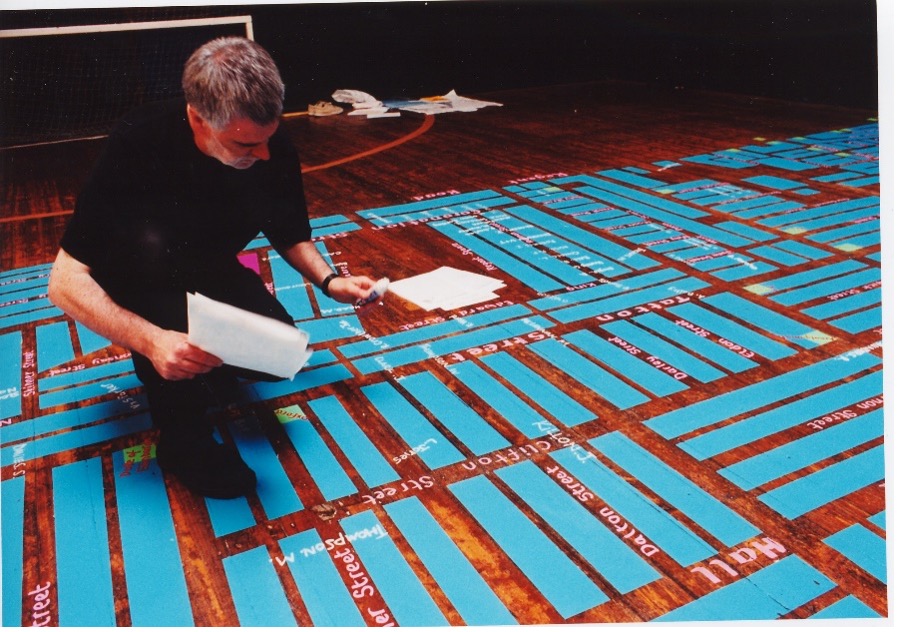
One of the first projects I created at Salford Lads Club in 2003 was a giant painted map of the Ordsall Estate (see above) which I painted directly on to the gym floor. After 10 years living in Ordsall I realised how important the original streets, shops, pubs, still were to people. I’d worked on arts projects with mental health groups of the estate already and it was clear that some people were still suffering a sense of bewilderment 30 years later, when the place they had grown up in, no longer existed. The painted project generated a lot of interest in the community and I added over a 1000 names which local people passed on to me of the streets where they had lived. The painted map remained in place for 3 months. Part of the reason for the project was to enable the club to re-sand and seal the floor which had not been done for many years, but by the time this took place many of the older volunteers at the club were reluctant to lose it again! They saw the process mirroring the erasing of the original streets and it reinforced the value people place on projects about their lost community.

I went on to create 3 more large scale artworks about the estate including “The Street of 1000 children” in 2007 again for Architecture Week. This was 2 long banners the length of the gym which listed all the residents of Rudman Street in Ordsall from when in was built in 1903 to when one side of the street was demolished in 1978 (see below). I collected information from Kellys’ Street directories and also added the occupations that people had listed. The project attracted more interest than the painted map and brought back many original residents of the Street from all over the UK who had heard of the project on BBC Radio Manchester, BBC North West Tonight and articles in the Manchester Evening News. This was followed by articles in National Housing Magazines and The Big Issue magazine. The title was from news article in the 1960s about the 60 house of Rudman Street being home to over 300 children. The article was first published in the “Salford Comet“ and the Manchester Evening News.
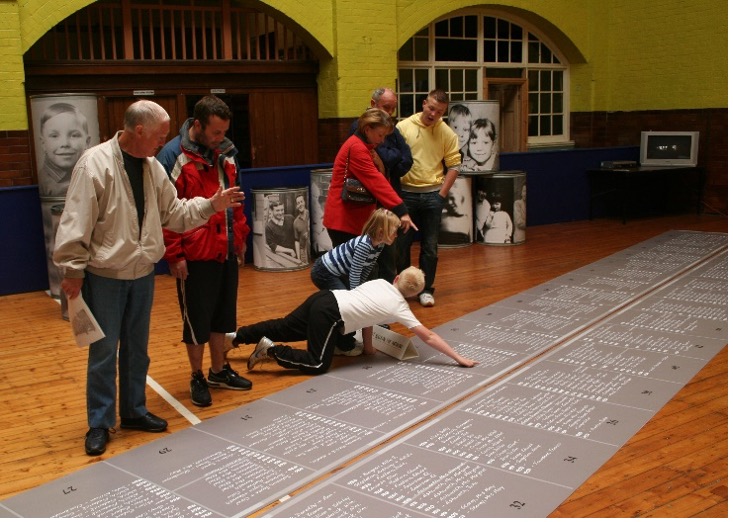
I also made a large drawing in 2000 putting together maps of the Ordsall Triangle from 1922 and from 2000 to show how much of the estate had been lost. The fainter grey blocks show the building pattern from 1922 and the black blocks show buildings in 2000. The main blank area on the left hand side of the drawing shows Regent Square Park with the surrounding streets of The New Barracks Estate, this is the only remaining group of terraced streets on the estate dating from 1903. The large blank area on the bottom of the drawing is Ordsall Park.
